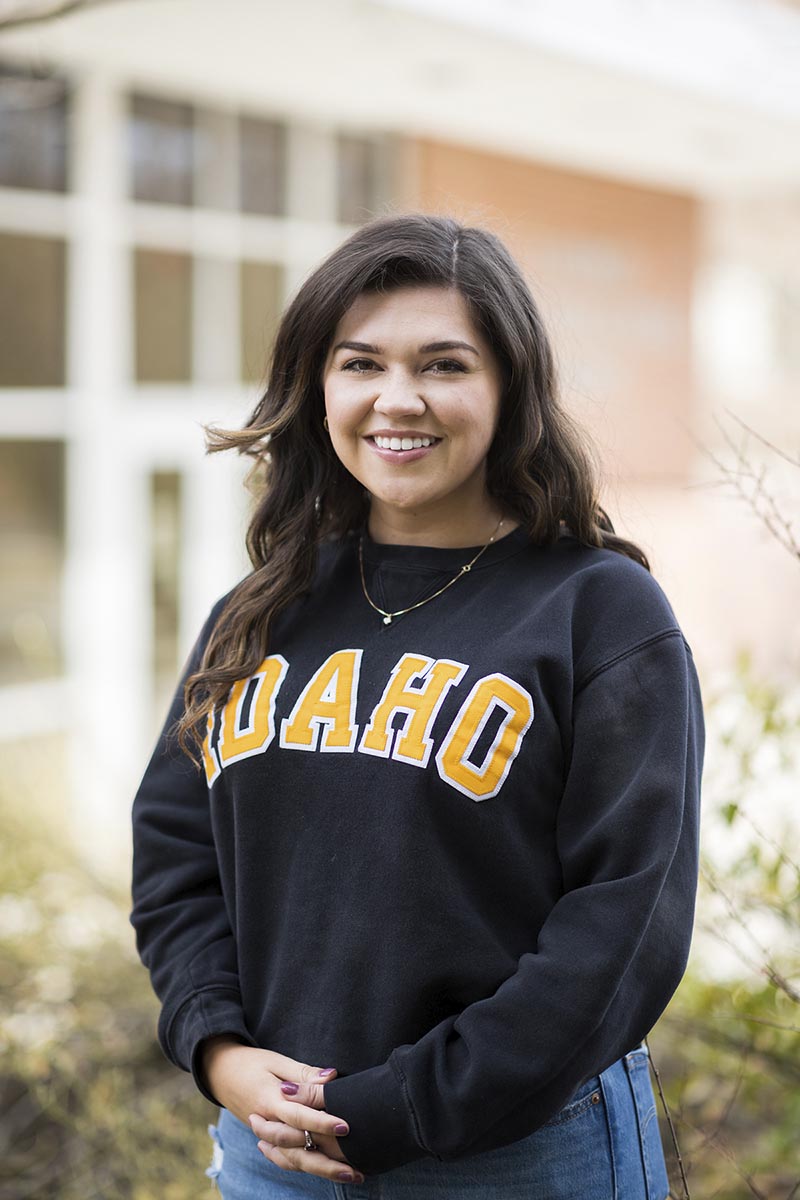Improving Beef Value
CALS student examines consumer preferences to improve top round cuts
When browsing the meat aisle at your local grocery store, you’ll notice that top round cuts of beef are typically priced lower than other cuts. Located in the round primal on the rump and hind legs, top round cuts are made up of muscles used for movement, resulting in a leaner and less tender cut of beef.
Researchers at the University of Idaho want to improve the top round cut — offering consumers a higher quality item and producers more value for their product. Brooklyn Epperson, a U of I student studying animal and veterinary science: production in the College of Agricultural and Life Sciences is spearheading a consumer beef purchasing survey as the first step in the process.
“We’re trying to figure out, if we cut a steak a certain way, then maybe consumers will have a different choice,” Epperson said.
Working with U of I assistant professors Michael Colle and Phil Bass in the Department of Animal, Veterinary and Food Sciences, and Kasee Smith in the Department of Agricultural and Extension Education, Epperson administered an online survey featuring roughly 200 different steak cuts. To keep the survey short, participants were randomly assigned a small subset of the steak cuts to view. Participants then indicated how likely they would be to purchase that steak and how much they would be willing to pay.
“We’re hoping to see what consumers would most likely choose between the steaks,” Epperson said. “This will hopefully add more value to an inexpensive cut of beef like the top round. Hopefully producers can see a value change in this portion of meat.”
Alternative Cutting Methods
Results from the survey will help researchers decide which cutting methods to present to processors as alternatives to traditional top round cuts. One option is to separate the superficial and deep portions of meat to create a more uniform product.
“I think it’s important to provide consumers with a more uniformed product,” Epperson said. “We’re looking at the deep and superficial portions of the meat so sometimes there could be color changes occurring in the superficial portion and the deep portion might be darker. We’re hoping by cutting the meat and slicing it in two, to separate the superficial and deep, that consumers might see a more uniform product.”
The color of a cut of beef can influence a consumer’s willingness to purchase. Consumers prefer beef that is bright red and perceive discolorations as the product being less fresh or less safe to eat. Discoloration doesn’t necessarily indicate spoilage, but consumers are unwilling to take the risk.
“Discoloration, it’s not a bad thing it just happens with cooling methods because the deep portion could be cooled at a slower rate than the superficial,” Epperson said. “So, I think if consumers see a more perfectly red portion of beef instead of having a small area of redness, they’ll be more inclined to purchase it.”
Future Meat Scientist
Originally from Linden, California, Epperson transferred to U of I in spring 2019 after earning an associate degree in animal science from Modesto Junior College.
“I’d heard U of I had a great pre-vet program,” Epperson said. “We toured campus, met with Dr. Amin and just fell in love with it. It was absolutely my dream school.”
Although she knew that she wanted to one day work with animals, it wasn’t until she took an opportunity to join Colle and Bass’ meat science team as an undergraduate research assistant that Epperson found her true calling.
“Once I got involved with Dr. Bass and Dr. Colle’s meat science group and got involved with the research I automatically was fascinated and wanted to learn more,” she said. “I really had no idea what meat science entailed so learning more about the industry, interacting with students and seeing the results has been the best part.”
Epperson will graduate in May 2021 and plans to further her education at U of I with a master’s degree. She hasn’t decided on a future career but knows that it will be in meat science.
“I wasn’t expecting to go from pre-vet to meat science, but once I fell into it, I absolutely loved it,” she said. “I’m very open to what the future may hold. Teaching people and looking at different cut choices could be worked together. Being able to teach people more about the industry would be very fascinating.”
Article by Amy Calabretta, College of Agricultural and Life Sciences
Photos by Joe Pallen, University Communications and Marketing
Published in April 2021








